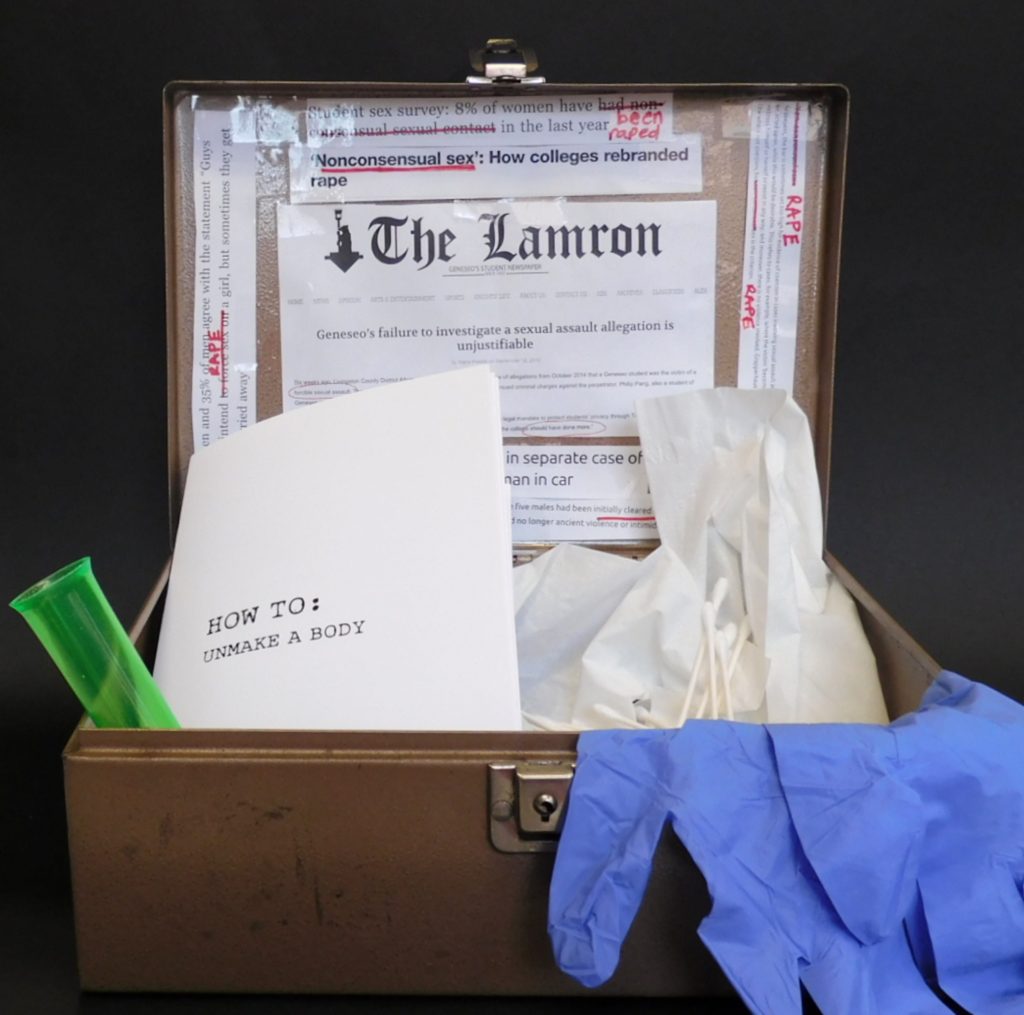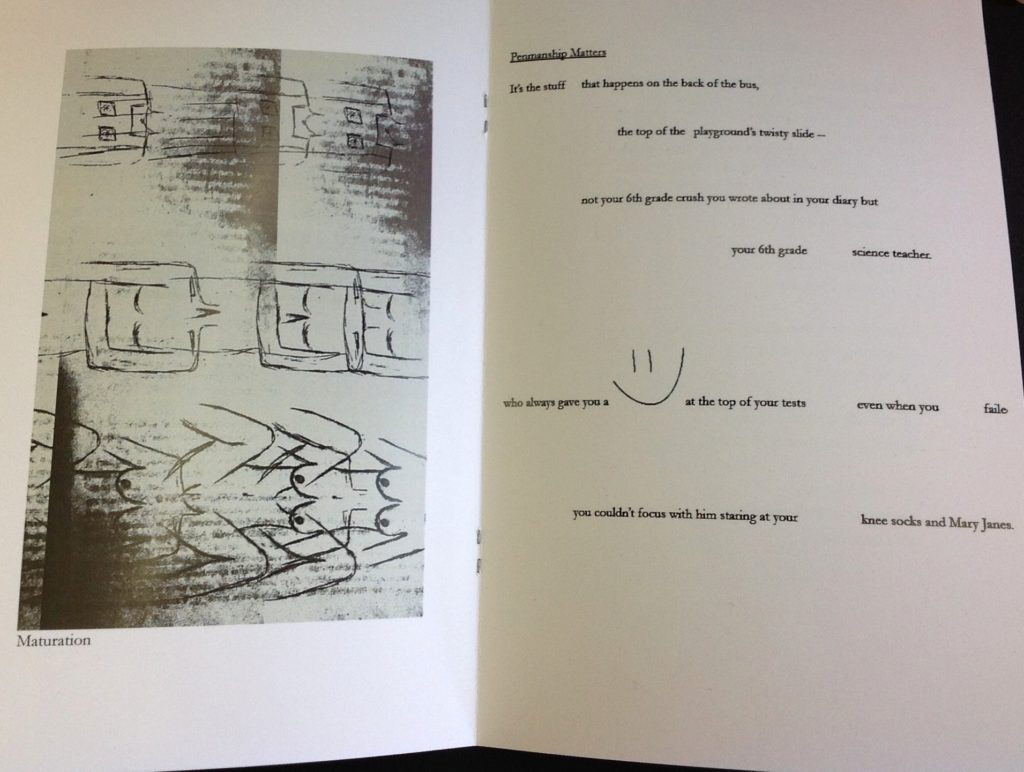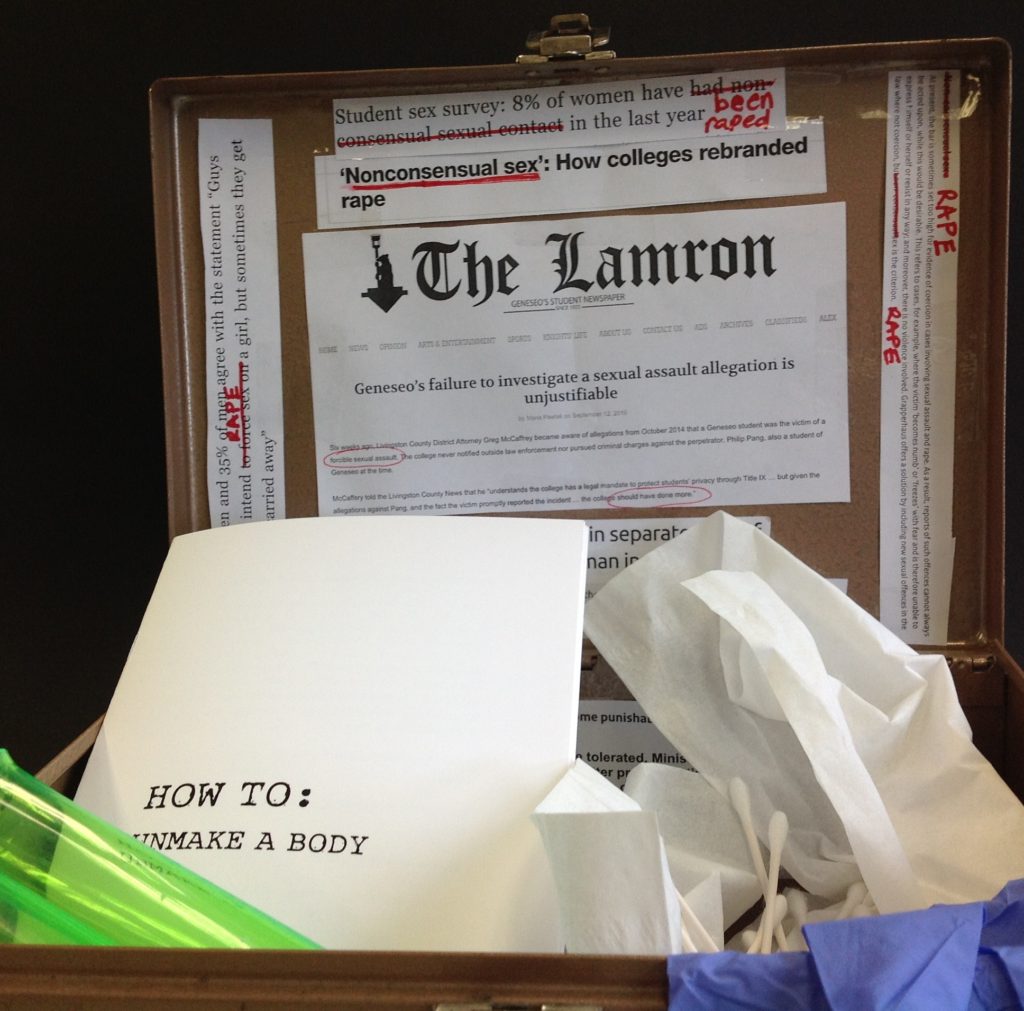There is an epidemic present in our country.
I am exposing the abuses of rape — from the act itself to the aftermath. Rape is pervasive in America. The way we converse about it and the way we consider it in the eyes of the law is inadequate. Nonconsenaul sex does not exist — this is rape. Rape kits go untested — this is repulsive. This project was inspired by the frightening statistics I encountered this past year while political turmoil was drowning women and their bodily, reproductive rights.
No one wants to talk about it. And that’s exactly why I am.
In America, rape occurs every 90 seconds. 1 in 6 women have been the victim of rape; 1 in 33 men have, too. However, 2 out of 3 incidents are never reported. From the one third that is reported, a rape kit is completed. These exams cost upward of $1,000, not including the emotional, and mental trauma associated — 94% of rape victims suffer from PTSD after the incident. After these extensive and exhaustive yet necessary exams are administered, they are meant to then be analyzed and used as evidence in court. 400,000 rape kits sit on shelves untested. Even more become lost or void for various reasons. Detroit alone lost 11,000 rape kits. This contributes to the 99% of sexual assault perpetrators that walk free.
Let’s put these numbers into words. Every hour, approximately 40 rapes occur. Only 13 of these rapes are reported. 10 of these victims can afford a rape kit; 9 of the kits will remain untested. Finally, and possibly, from the 1 rape kit that is tested, perhaps this may lead to legal consequences against the rapist.
But, also, perhaps not.
This issue is a systemic one. That is what I wish to illustrate here in this project. I wish to prove the detrimental positive feedback loop: by having this backlog of rape kits, victims are less likely to invest in completing one. Because of this, victims are less likely to report. Because of this, rape is not taken as seriously as it should be. Because of this, victims merely remain victims — unable to transform that pain and trauma into one of a survivor. They are unable to attain justice.
Inside this rape kit, and online, are supplies. These supplies create a story.
This story is to demonstrate that we must do better; we must strive toward justice for victims of sexual assault. Here, we see a rape kit. It is old, it is neglected. Inside are medical supplies and a manual. This manual containing poems and art that depict the rape of a girl and the repercussions of that. In the online portion, we see the procedural, formulaic part. We see the issues of administering a rape kit dramatized. We see the forms, the legalities. We see the lack of compassion. We see the lack.
This project is one of immediacy, intimacy, and importance. It is meant to make the reader uncomfortable. It is meant to raise questions. It is meant to be evocative. This is how we create change.
There is an epidemic present in our country. But, this problem is solvable.
My sincerest gratitude, to you, for reading.
*statistics from https://www.rainn.org/statistics & https://natashasjusticeproject.org/about/statistics/



To view the digital content of “Rape Kit,” click on this hyperlink.
